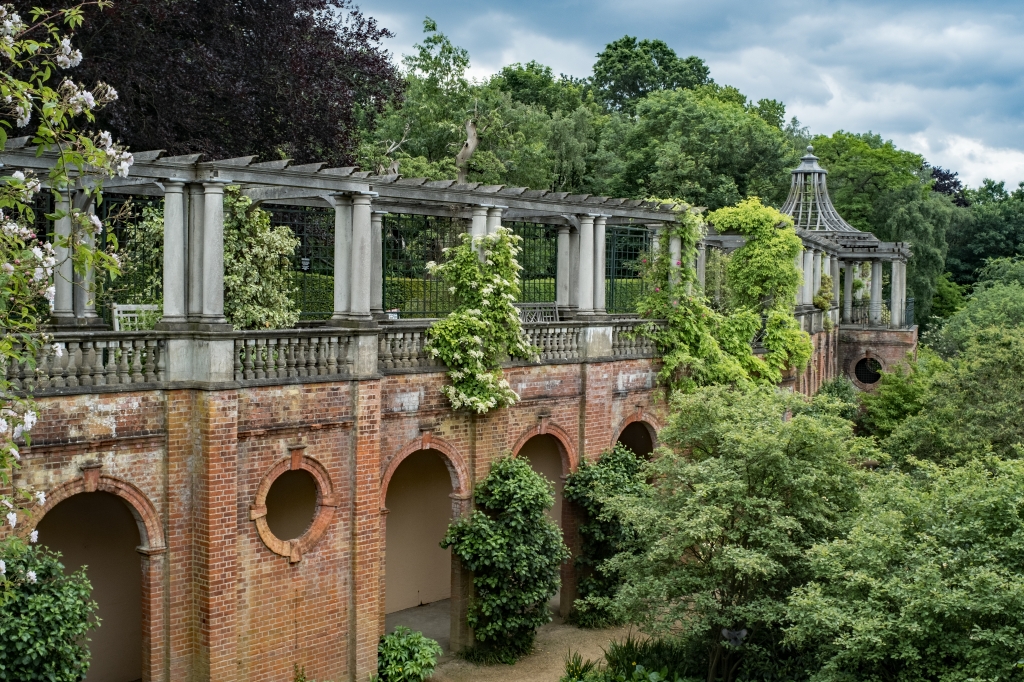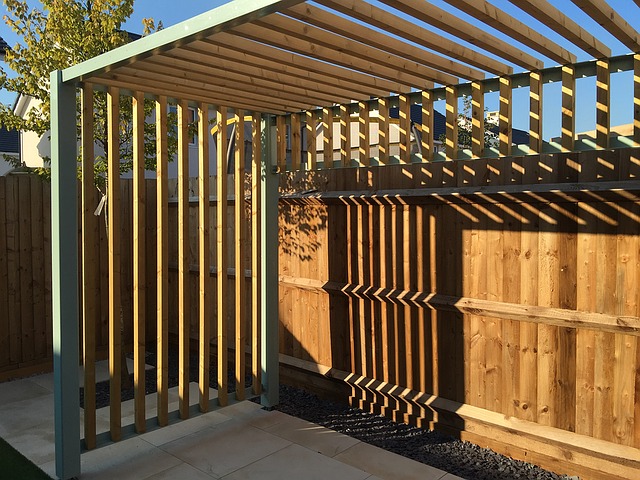Pergola
Contents |
[edit] Introduction
A pergola is a type of garden structure that is typically constructed over an outdoor seating area or walkway. Pergolas are usually made from vertical posts, horizontal cross beams and a lattice roof (that is either left open or closed, although some pergolas are convertible).
[edit] History
The word pergola comes from the Latin word pergula, which translates as projecting eave.
Masonry pergolas were popular during the Italian Renaissance. The idea was adopted by English landscape designers who brought them to England and introduced them into the gardens of their clients.

|
| This structure, designed by Thomas Mawson, is an elaborate pergola located at The Hill in Hampstead. |
Pergolas lost some of their appeal in the 18th and 19th centuries, when it became more popular to elevate the untamed aspects of nature. They regained favour in the 19th and 20th centuries through the designs of Sir Edwin Lutyens and Gertrude Jekyll.
[edit] Purpose
An open (or roofless) pergola is generally used for decorative purposes. Closed (or roofed) pergolas can be decorative as well, but they can also be used as protection from the elements (such as shading from the sun or shielding from the rain). Pergolas are generally open on the sides.
Both structures are sometimes used to support vines, roses or other types of climbing flowers or foliage. Pergolas can be made from timber, plastic, steel, stone or a combination of materials and can be built onto another structure or left freestanding.
Pergolas and arbours are similar, although arbours traditionally feature colonnades of vertical supporting columns.
Pergolas are also similar to gazebos, although gazebos traditionally feature a closed roof.
[edit] Related articles on Designing Buildings Wiki
IHBC NewsBlog
IHBC Membership Journal Context - Latest Issue on 'Hadrian's Wall' Published
The issue includes takes on the wall 'end-to-end' including 'the man who saved it'.
Heritage Building Retrofit Toolkit developed by City of London and Purcell
The toolkit is designed to provide clear and actionable guidance for owners, occupiers and caretakers of historic and listed buildings.
70 countries sign Declaration de Chaillot at Buildings & Climate Global Forum
The declaration is a foundational document enabling progress towards a ‘rapid, fair, and effective transition of the buildings sector’
Bookings open for IHBC Annual School 12-15 June 2024
Theme: Place and Building Care - Finance, Policy and People in Conservation Practice
Rare Sliding Canal Bridge in the UK gets a Major Update
A moveable rail bridge over the Stainforth and Keadby Canal in the Midlands in England has been completely overhauled.
'Restoration and Renewal: Developing the strategic case' Published
The House of Commons Library has published the research briefing, outlining the different options for the Palace of Westminster.
Brum’s Broad Street skyscraper plans approved with unusual rule for residents
A report by a council officer says that the development would provide for a mix of accommodation in a ‘high quality, secure environment...
English Housing Survey 2022 to 2023
Initial findings from the English Housing Survey 2022 to 2023 have been published.
Audit Wales research report: Sustainable development?
A new report from Audit Wales examines how Welsh Councils are supporting repurposing and regeneration of vacant properties and brownfield sites.
New Guidance Launched on ‘Understanding Special Historic Interest in Listing’
Historic England (HE) has published this guidance to help people better understand special historic interest, one of the two main criteria used to decide whether a building can be listed or not.

















